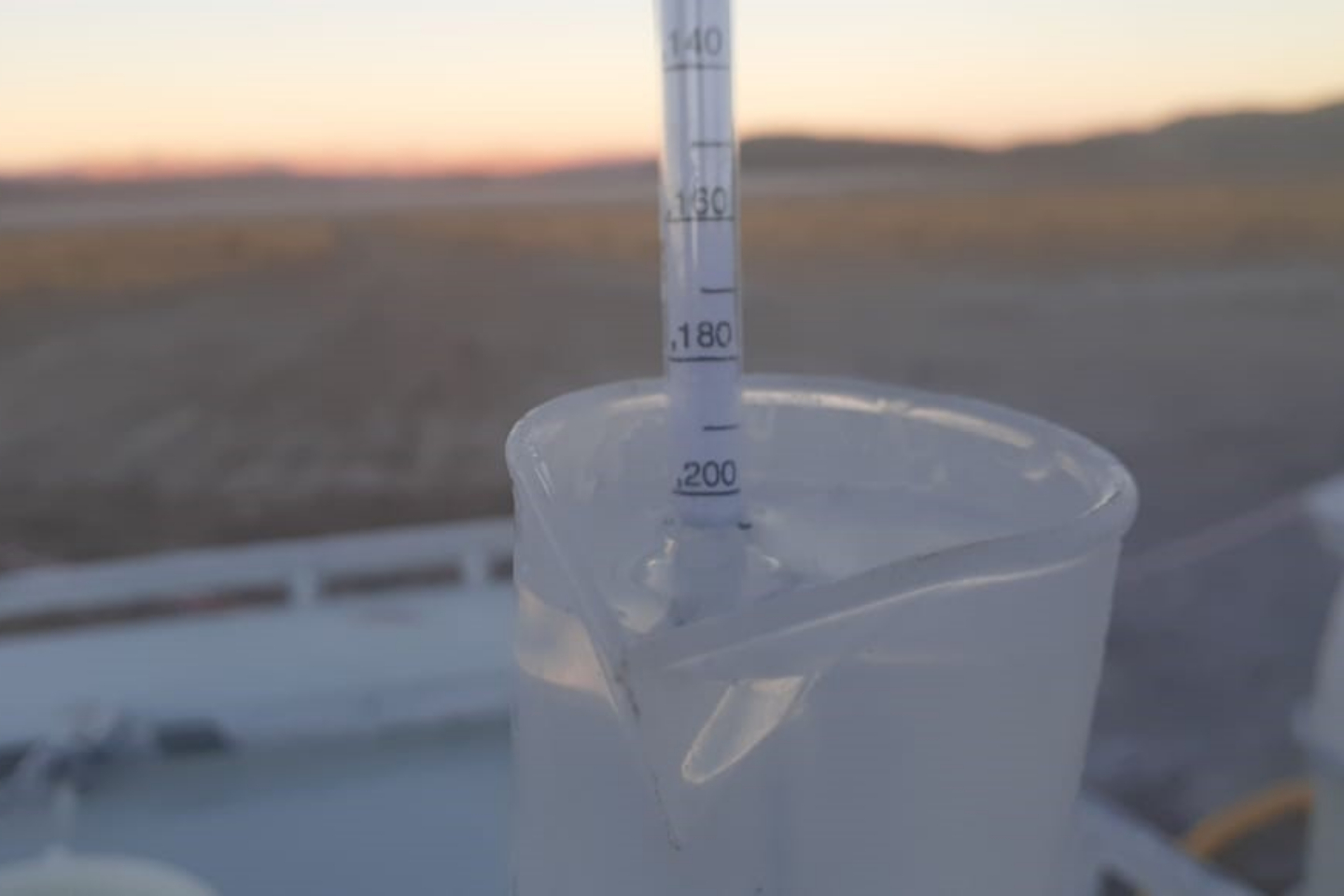Galan Lithium has submitted an application to scale up the piloting stage of the company’s flagship Hombre Muerto West lithium brine project in Argentina that sits within South America’s Lithium Triangle. The proposed semi-commercial test run is anticipated to produce up to 4000 tonnes of lithium carbonate equivalent per annum in the form of a high-quality 6 per cent lithium concentrate.

Galan Lithium has submitted an application to scale up the piloting stage of the company’s flagship Hombre Muerto West lithium brine project in Argentina that sits within South America’s Lithium Triangle. The proposed semi-commercial test run is anticipated to produce up to 4000 tonnes of lithium carbonate equivalent, or “LCE” per annum in the form of a high-quality 6 per cent lithium concentrate.
If the Argentine explorer is successful in its application, in mid-2023 it plans to construct 120 hectares of additional evaporation ponds along with a small facility to trial the production of lithium carbonate. The company is also considering including its up-scaled pilot pond system in the full-scale design of the project as a way to significantly shorten construction and production timelines.
It is also hoped the semi-commercial test run will work to de-risk the targeted full-scale pond construction methodology and evaporation path in addition to providing sharper capital and operating cost information. The company says it is on track to lodge a production profile permit for more than 20,000 tonnes of LCE per annum in the first quarter of next year.
Galan Lithium Managing Director, Juan Pablo Vargas de la Vega said: “The scaling to semi-commercial pilot plant testing delivers significant ancillary and de-risking benefits, including the construction of larger ponds which are similar to those planned to be utilised during HMW’s full-scale production stage.”
The news comes hot on the heels of a 158 per cent increase to its flagship resource announced late last month. The company’s flagship resource now tips the scales at 5.8 million tonnes of contained LCE, grading 866 milligrams per litre – remarkably more than double the size of the previous resource of 2.2 million tonnes grading 946 milligrams per litre.
The developer says it has achieved its new estimate whilst maintaining a high-grade and low-impurity concentration. Data from the revision will be integrated into a larger definitive feasibility study of the project which is on course for an early 2023 release.
The economics around the project were cursorily assessed in an updated preliminary economic assessment in 2021 where the production of 20,000 tonnes per annum of battery grade LCE was projected for 40 years. The study projected a remarkable EBITDA of US$287 million per annum and an NPV of US$2.2 billion using a long-term average price of US$18,594 per tonne of LCE. The project would require a capital cost of US$439m and a payback period of just 2.75 years.
Notably, market prices for lithium have never been higher. Today on the Shanghai Metals Market prices for lithium carbonate settled at an average of US$77,427 per tonne – a figure that casts a long shadow over the price estimate used in Galan’s cursory economic assessment. Whether prices will deflate over the long term is still hotly debated as analysts try to juggle forecasts over the future supply and demand of the battery metal.
The only certainty is: if an electric vehicle fleet is going to drive us to net zero – we are going to need a lot more lithium.
Is your ASX-listed company doing something interesting? Contact: matt.birney@businessnews.com.au
















